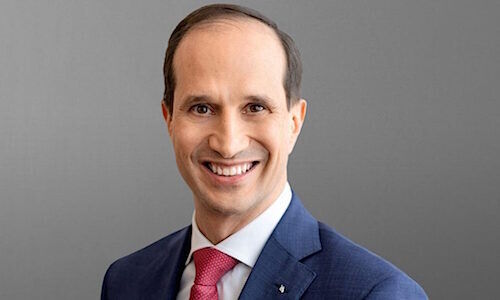Credit Suisse’s Francesco De Ferrari is betting on continuing to serve the ultra-wealthy with a cross-divisional focus. He will put the model to test in a very different era for the bank.
Credit Suisse’s global head of wealth management Francesco De Ferrari underlined a continued focus on the «one bank» model of bringing the whole group’s capabilities across private and investment banking to holistically serve the diverse needs of ultra-high net worth (UHNW) individuals.
«To be a trusted advisor to a client, you need to be relevant for their issues,» said De Ferrari during an investor session yesterday, underlining the ultra-wealthy’s top priority of growing their own businesses.
«If you think of the verticals as business divisions, we are not the largest in any of them but we are, from what I gather from talking to clients, really the best at playing in the space between the verticals. In [the UHNW segment], this is really about doing more of the same and continuing to evolve because competitors don’t sit still.»
Same Model, Different Era
Although De Ferrari is very familiar with the one-bank model with a wealth of experience in cross-divisional collaboration at Credit Suisse during his last 16-year stay until 2018, he is admittedly returning to a very different financial institution. A series of failures later, including the downfall of family office Archegos and Greensill supply chain finance funds, Credit Suisse is not exactly the same bank.
The greater internal scrutiny from stricter risk management is mirrored externally by a reputational hit. While existing UHNW entrepreneurial clients expressed support, De Ferrari noted that recent events have nonetheless caused a «partial impact» on the wealth unit including greater difficulty in acquiring new UHNW clients.
Asia: Less Autonomy
In addition to the much needed tightening of risk management and culture, De Ferrari is leading a wealth unit that is also structurally less autonomous.
As part of a broader reorganization, Credit Suisse's APAC business ceased to be a standalone unit this year with the regional wealth business restructured into the global wealth management division. This is particularly important for the bank as the APAC region accounts for around 30 percent of the wealth management business worldwide.
The restructuring may help prevent future failures, such as the 2020 accounting scandal with Luckin Coffee whose founder Lu Zhengyao was infamously called a «poster child» and «dream client» for one-bank business by Credit Suisse’s ex-CEO Tidjane Thiam. But this will certainly have an effect on the momentum of one-bank-related business activities compared to the previous era when the private and investment bank in Asia were housed within the same unit.
Relying on DNA
And even with a more diversified focus on other segments – the bank underlined accelerated coverage of the high net worth segment, especially in Hong Kong and Singapore – De Ferrari is persistent that Credit Suisse will maintain its positioning, as per its tagline, to be «the bank for entrepreneurs».
According to De Ferrari, the focus on cross-divisional collaboration has been built into the core of the bank’s identity and is unlikely to be easily lost due to structural changes. An unnamed source close to the matter also previously expressed similar sentiments to finews.asia, calling this ability «muscle memory».
«You do not improvise the stuff that’s on this page overnight,» De Ferrari said about a presentation slide from the bank's 2022 Investor Deep Dive describing the model. «We started this journey in 2005 with something called 'one bank’. 17 years later, we continue to evolve this. This is something that is embedded in the DNA of Credit Suisse. It’s not something you can copy that quickly overnight.»




































